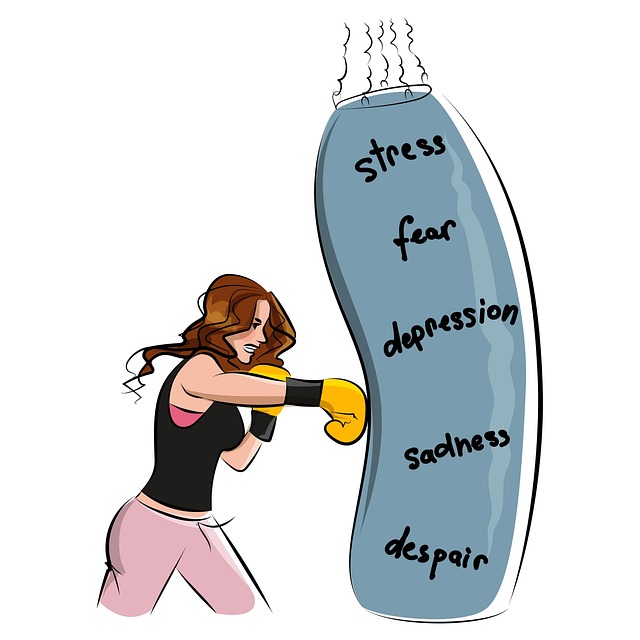Superior Dialectical Behavioral Therapy (DBT) emphasizes risk assessment as a vital tool for client safety, going beyond checklists by analyzing psychological history, coping strategies, and environmental factors. This approach identifies internal and external risks, leading to targeted interventions that minimize harm while boosting self-esteem. DBT's structured harm minimization planning involves identifying distress sources, integrating mindfulness and emotion regulation techniques, and providing tools like Mental Wellness Journaling and Stress Management Workshops. Continuous monitoring, data analysis, and collaboration ensure the effectiveness of risk management in mental health care settings, fostering a holistic and proactive approach to client well-being.
Risk assessment and harm minimization planning are essential components of superior safety practices, particularly within complex environments. This article delves into these critical processes, offering a comprehensive guide. We explore ‘Understanding Risk Assessment’ as the foundation for safe operations, highlighting the unique role of Dialectical Behavioral Therapy (DBT) in harm minimization strategies. Furthermore, we provide practical steps for developing robust plans and emphasize the continuous need for implementation and monitoring to ensure ongoing safety and support.
- Understanding Risk Assessment: A Cornerstone of Safe Practice
- The Role of Dialectical Behavioral Therapy (DBT) in Harm Minimization
- Developing a Comprehensive Harm Minimization Plan
- Implementation and Monitoring: Ensuring Continuous Safety and Support
Understanding Risk Assessment: A Cornerstone of Safe Practice

Risk assessment is a fundamental aspect of any therapeutic practice, especially in Superior Dialectical Behavioral Therapy (DBT). It involves meticulously evaluating potential hazards and their likely outcomes to ensure client safety and well-being. This process is not merely a checklist exercise but a nuanced inquiry into the individual’s unique circumstances, including their psychological history, coping mechanisms, and environmental factors. By understanding these complexities, therapists can tailor interventions to mitigate risks effectively.
A robust risk assessment forms the bedrock of harm minimization planning in DBT. It empowers therapists to proactively address dangers, whether internal (e.g., suicidal ideation) or external (e.g., unsafe living conditions). Moreover, it fosters a culture of public awareness campaigns and emotional well-being promotion techniques, ultimately enhancing self-esteem improvement through proactive risk management. This strategic approach not only prevents harm but also cultivates a therapeutic environment where clients feel supported and empowered to navigate life’s challenges.
The Role of Dialectical Behavioral Therapy (DBT) in Harm Minimization

Dialectical Behavioral Therapy (DBT) plays a pivotal role in harm minimization planning within mental health care. This superior therapy approach is particularly effective for individuals dealing with emotional dysregulation, impulsivity, and interpersonal difficulties. By combining cognitive-behavioral techniques with mindfulness practices, DBT equips clients with valuable skills to navigate distressing situations more adaptively. It fosters a balanced state between accepting one’s emotions and changing their impact, which is crucial for harm minimization.
In the context of Risk Management Planning for Mental Health Professionals and Mental Wellness advocacy, DBT offers structured tools for identifying and responding to high-risk behaviors. Through individual therapy sessions and group skills training, clients learn to recognize early warning signs of potential harm and implement coping strategies to prevent escalation. This proactive approach aligns with broader goals in Mental Health Policy Analysis and Advocacy, promoting evidence-based practices that enhance client safety and well-being.
Developing a Comprehensive Harm Minimization Plan

Developing a comprehensive harm minimization plan is an integral part of Superior Dialectical Behavioral Therapy (DBT), designed to help individuals effectively navigate and mitigate potential risks. This process involves a systematic approach to identify, assess, and address sources of distress or harmful behaviors. By incorporating strategies from DBT therapy, such as mindfulness, emotion regulation, and distress tolerance, the plan becomes a powerful tool for personal growth and well-being.
A key component of this strategy is integrating Mental Wellness Journaling Exercise Guidance into daily routines. Regular journaling allows individuals to track their emotions, identify triggers, and reflect on coping mechanisms. Additionally, Stress Management Workshops Organization within communities or workplaces can provide valuable support networks. These workshops offer practical guidance on burnout prevention, teaching participants effective stress management techniques tailored to their unique needs.
Implementation and Monitoring: Ensuring Continuous Safety and Support

The successful implementation of risk assessment and harm minimization planning relies heavily on continuous monitoring and evaluation. This process ensures that safety measures remain effective and adaptable to changing circumstances, particularly within mental health care settings. By employing Superior Dialectical Behavioral Therapy (DBT) techniques, healthcare professionals can foster a dynamic environment where clients’ needs are consistently assessed and addressed. Regular reviews of risk assessment data allow for timely adjustments in treatment plans, ensuring the highest level of safety and support for all individuals involved.
Effective monitoring involves not only internal evaluations but also collaboration with community outreach programs and mental health policy advocates. This multifaceted approach enables a comprehensive understanding of potential risks and promotes proactive harm minimization strategies. For instance, Community Outreach Program Implementation can help identify at-risk populations and provide necessary resources, while Mental Health Policy Analysis and Advocacy ensures that systemic changes align with best practices in risk management, ultimately contributing to a more resilient and supportive mental health ecosystem.
Risk assessment and harm minimization planning are essential components of safe practice, as highlighted throughout this article. Integrating Superior Dialectical Behavioral Therapy (DBT) offers a robust framework for addressing complex situations and promoting positive outcomes. By developing comprehensive plans, implementing effective strategies, and continually monitoring progress, we can ensure a supportive environment that fosters safety and well-being. These practices are vital in navigating challenging circumstances and creating a harmonious tapestry of care.














